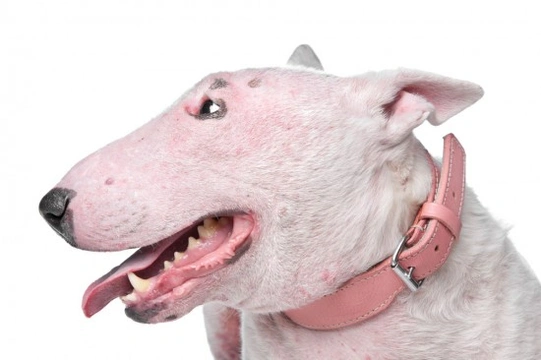
Mange in dogs - What do you need to know?
“Mange” is the name given to an unpleasant and painful skin disease caused by parasitic mites that can affect a wide variety of animals, humans and dogs among them. Mange is an equal opportunities parasite, living equally happily on skin, fur, and even plants and reptiles, and so is one of the easiest to pass on and transmit, and one of the hardest to effectively eradicate.
Mange in dogs is often associated with neglect and poor condition, and it is certainly true that leaving an infestation of mange untreated would constitute the neglect of a dog or any other animal. However, as mange can be highly contagious, even the very best cared for of dogs and other pets may find themselves contracting the condition if they come into contact with carriers of the parasite, and even the most conscientious of pet owners may potentially find themselves faced with an outbreak. Wild foxes within the UK often carry mange, and so even inadvertent contact with wildlife could be enough to pass the condition onto your dog.
Do you know how to identify mange in dogs, know what forms mange infestation can take, and what to do about it? Read on to find out more!
What is parasitic mange?
Mange is essentially a parasite, consisting of tiny mites that burrow into either the hair follicles or the skin of the affected animal, causing inflammation, hair loss, irritation, soreness and intense itching. In humans, this condition is known as scabies or demodicosis, whereas in dogs it takes the form of either demodetic or sarcoptic mange. Both of these strains of mange are very similar in appearance, but are caused due to two different strains of mites.
Demodetic mange
Demodetic mange (also sometimes known as demodicosis or red mange) arises due to the presence of the Demodex canis mite, which often exists in small numbers on dogs with no ill effects or other impacts. However, if a dog is unwell or has a compromised immune system, the dog will not be able to offer up the necessary degree of resistance required to keep the mites under control, leading to either a generalised or localised outbreak of demodetic mange. “Localised” cases of demodetic mange are considered to consist of four spots or fewer, while generalised cases are, as the name suggests, more widely spread.
It is often a surprise to dog owners to learn that demodetic mange is not generally contagious, other than between a bitch and suckling pups. In fact, it usually resolves itself in puppies as they age and their immune systems begin to strengthen enough to fight off the condition successfully. The vast majority of adult dogs in good health have a natural immunity to demodetic mange, although animals with weakened immune systems and older dogs may be at risk of contracting it. Demodetic mange cannot be passed between dogs and humans.
Sarcoptic mange
Sarcoptic mange is sometimes simply called “canine scabies,” and unlike demodetic mange, this strain is highly contagious to other dogs and a wide variety of other animals too, and potentially even people in the form of the closely related human scabies parasite. Sarcoptic mange is caused by a different strain of mites than demodetic mange, being the Sarcoptes scabiei canis burrowing mite.
The mites responsible for sarcoptic mange literally burrow under the skin of their host, causing an allergic reaction that leads to intense itching, scabbing, crusting and infection. Loss of fur commonly accompanies the condition, and the persistent scratching caused by the severe itchiness of the condition can lead to damage to the skin and a range of secondary infections too. Dogs suffering from sarcoptic mange must be isolated away from contact with other animals in order to avoid passing the condition on inadvertently. Also, any bedding, toys, bowls and other equipment used on or around a dog suffering from sarcoptic mange must be thoroughly disinfected and cleaned to avoid secondary transmission.
Diagnosing mange in dogs
If a dog is suffering from mange, this is usually clearly apparent due to the presence of bald spots, scabs and sores, and in the case of sarcoptic mange, intense itchiness.
When mange is suspected, your vet will usually make a formal diagnosis of the condition by examining a skin scraping under a microscope to check for the presence of the mites. If low numbers of sarcoptic mange mites are present within the skin, however, they may not show up under microscopic examination, so your vet may make their diagnosis on the basis of a simple physical examination.
Treating mange in dogs
The good news is, there are various different treatment methods available to tackle attacks of mange in dogs. As mentioned, demodetic mange often resolves itself, and is not particularly contagious as most dogs have a natural immunity to it. Various anti-parasitic treatments can be used to treat persistent cases of demodetic mange that do not go away on their own, and to treat sarcoptic mange, including:
- Bi-weekly application of sulfurated lime rinses
- Ivermectin or selamectin application to the skin of affected dogs on a monthly basis until the condition is resolved
- Permethrin application directly to the skin
- Oral or injectable medications to kill the parasites
- Specialist shampoos or dips
All of these treatment methods require veterinary supervision or a veterinary prescription, so even if you are sure that your dog is suffering from one of the two strains of mange, it is important that you take them along to the vet in order to arrange the appropriate treatment protocol.
Seek treatment for your dog as soon as you suspect the presence of mange; both for your own dog’s own comfort and wellbeing, and to minimise the chances of passing the condition on to others.



